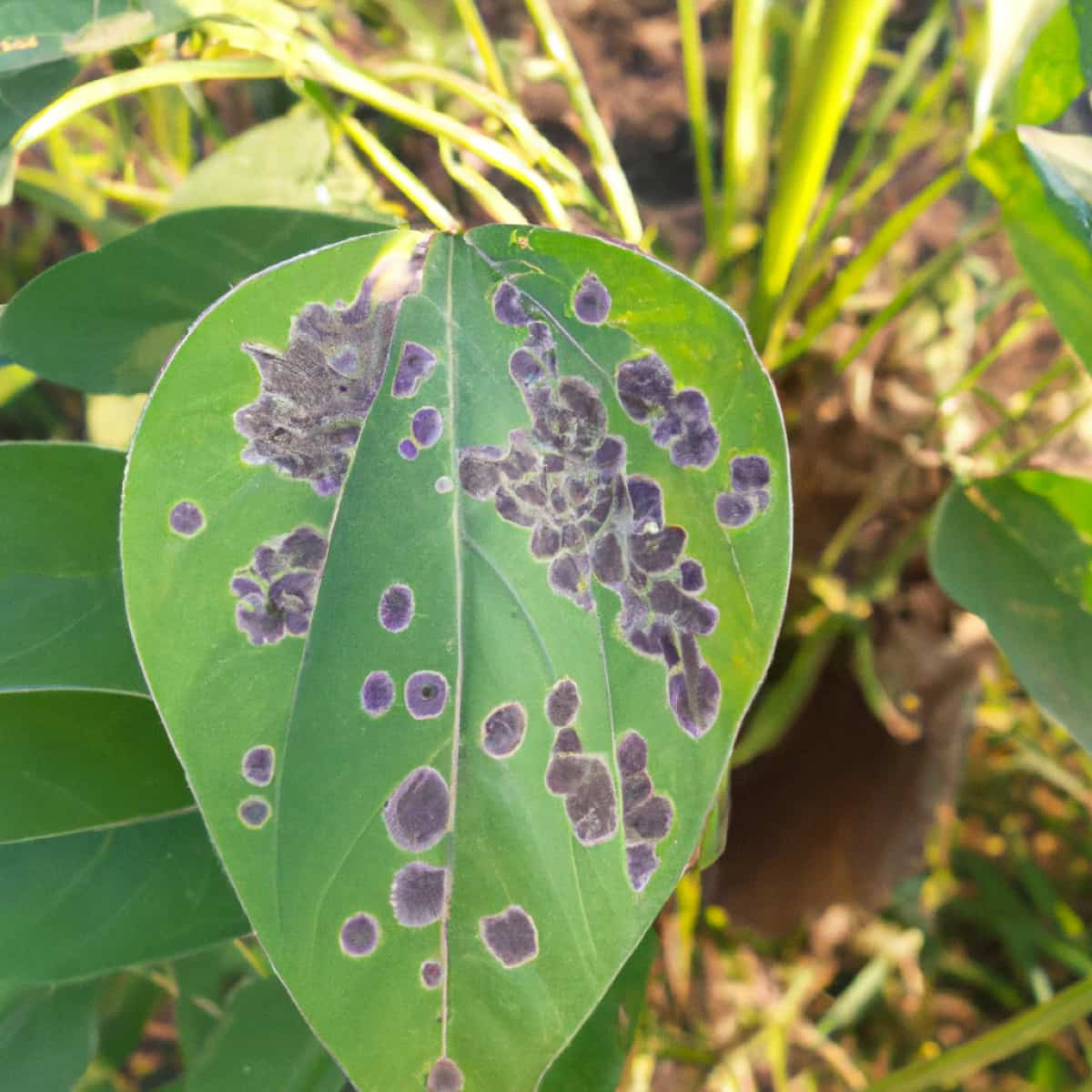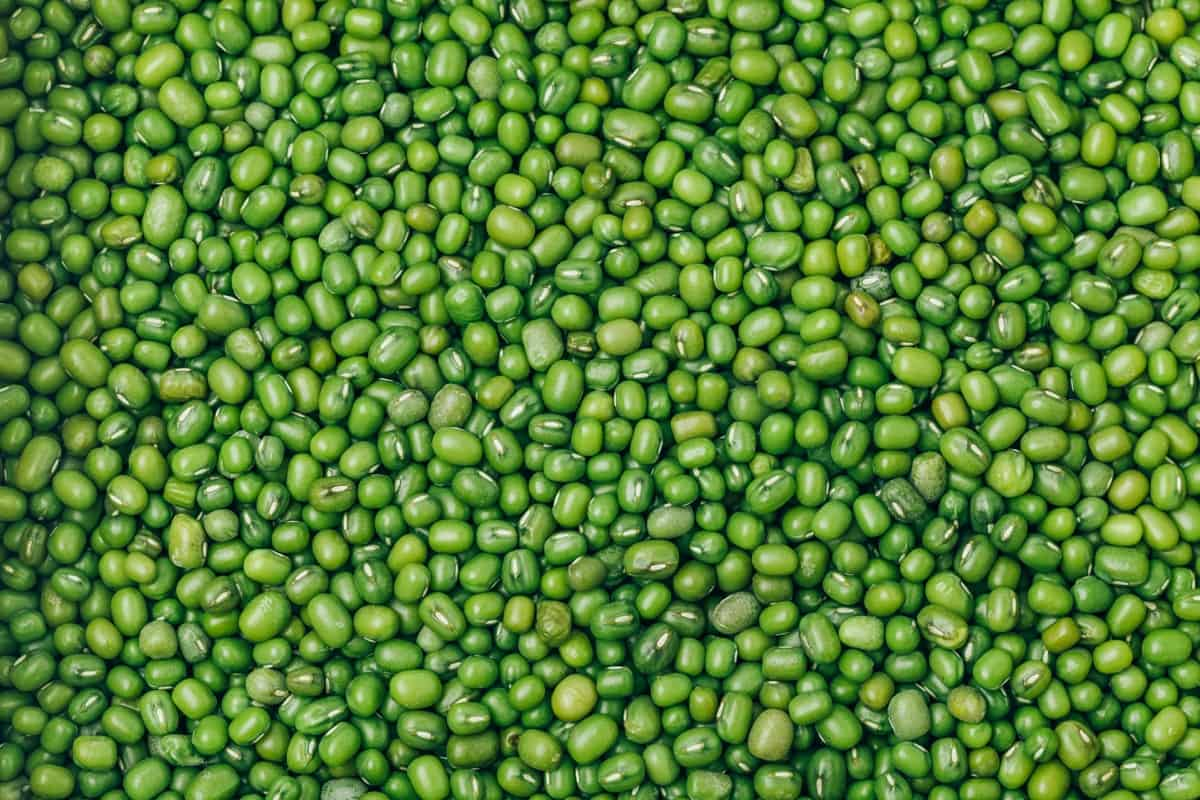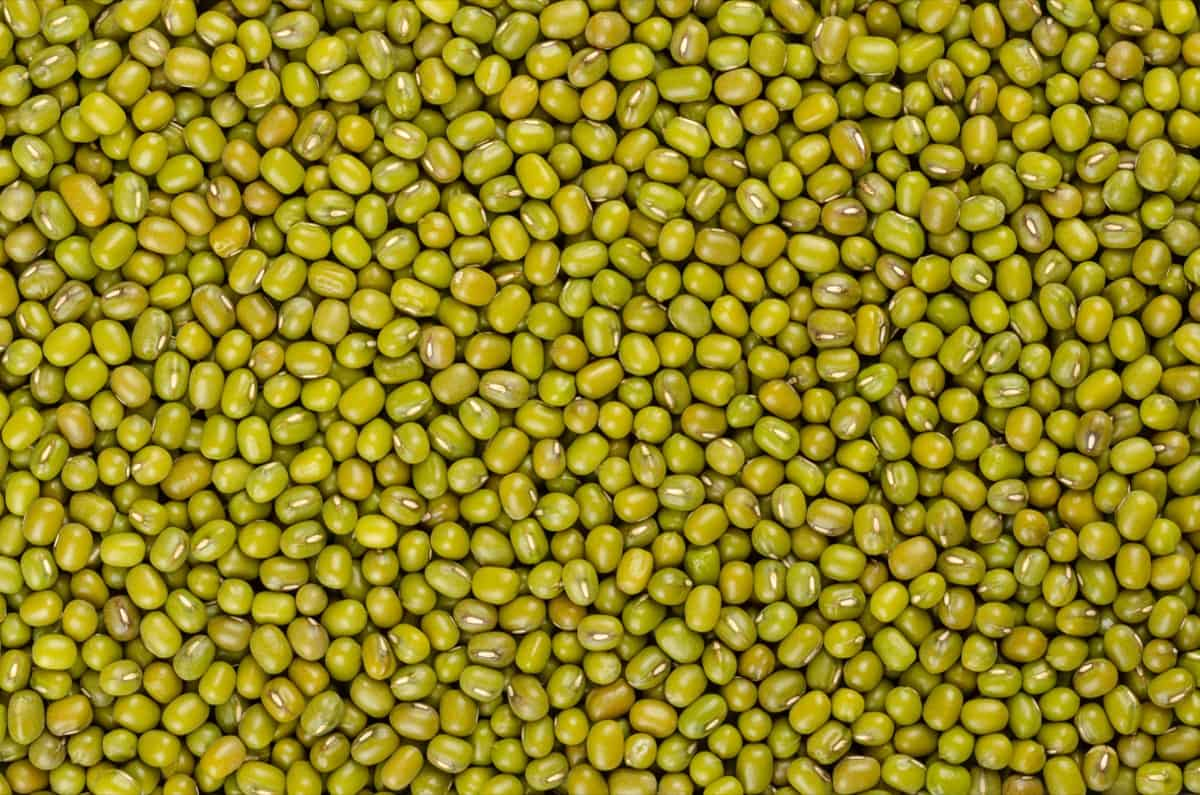Cercospora Leaf The fungus Cercospora canescens, which causes leaf spot disease, is frequently present in areas with high humidity and warm temperatures. Disease symptoms begin as small, circular, grayish-white spots on the plant leaves, which eventually enlarge and become necrotic or dead tissue. The disease can spread quickly, and plants with it can lose a lot of leaves, which lowers yield and quality. In severe cases, the disease can cause complete leaf drop, resulting in the death of the plant. Check out Cercospora leaf spot management in green gram below.

Cercospora Leaf Spot Disease is a serious fungal disease that affects Green gram plants, also known as Mung bean (Vigna radiata L.), causing considerable economic losses to farmers worldwide. Managing Cercospora Leaf Spot Disease involves various cultural practices and chemical control methods. Crop rotation with non-host crops, use of resistant varieties, proper sanitation practices, and maintaining proper irrigation and nutrient management can help reduce the incidence of the disease.
Fungicides and other chemical control techniques can be used to keep the disease under control, but they must be used properly to avoid creating resistant strains of the fungus. The history of Cercospora Leaf Spot Disease in Green gram dates back to the early 1900s, and the disease has been reported in several countries, including India, China, Indonesia, and Vietnam. Disease’s prevalence across a broad area of the globe, including Africa, Europe, and North America, requires significant research into its prevention, treatment, and management.
Cercospora Leaf Spot Management in Green Gram
Causal Organisms of Cercospora Leaf Spot
Cercospora canescens is the causal organism or pathogen responsible for Cercospora Leaf Spot Disease in Green gram. This fungus produces clusters of dark brown septate conidiophores, which are specialized structures that produce spores called conidia. The conidia are linear, hyaline, thin-walled, and 5-6 septate. The fungus is seed-borne and can survive on plant debris in the soil for over two years, making it a significant threat to crops.
Disease Cycle of Cercospora Leaf Spot
The Disease cycle of Cercospora Leaf Spot Disease begins with the survival of the Cercospora canescens fungus on diseased plant residues and seeds. The disease then spreads through air-borne conidia, carried by wind and rain to nearby healthy plants. The fungus can also travel long distances within the soil through the root system, infecting alternative hosts or volunteer crops in the field. The pathogen can be transmitted to lower plant parts through splashing water and air, further facilitating the spread of the disease.
Causes/Conditions Favorable for Cercospora Leaf Spot in the Field
Field factors influence Cercospora Leaf Spot Disease in Green gram. Fungi thrive in high humidity. Diseases thrive in the high day and night temps, moist soils, high humidity, and heavy stormy rains. The infection grows in these conditions and spreads quickly to healthy plants.
Symptoms of Cercospora Leaf Spot
- Small spots with a pale brown center and reddish-brown margins are produced on leaves, branches, and pods.
- The numerous spots can cause severe defoliation and leaf spotting under favorable environmental conditions.
- The disease can cause significant yield losses, especially during the flowering and pod formation stages.
- The fungus responsible for the disease is seed-borne and can also survive on plant debris in the soil.
- High humidity is favorable for disease development.
In case you missed it: Rust Management in Green Gram: Symptoms, Identification, Treatment, Chemical, Biological, Natural, and Organic Control

Cercospora Leaf Spot Yield Loss in Green Gram
Green gram, also known as mungbean, is one of the major pulse crops grown globally. However, Cercospora Leaf Spot Disease is a widespread and devastating disease that affects green gram crops, causing yield losses of up to 60%. The disease is caused by the fungus Cercospora canescens, which attacks the plant’s leaves, branches, and pods. The pathogen can spread rapidly under favorable environmental conditions, leading to defoliation and significant yield losses, especially during the flowering and pod formation stages.
Cercospora Leaf Spot Management in Green Gram by Cultural Method
- Cultural management methods play an important role in controlling Cercospora leaf spot disease. Some effective cultural methods include cultivating resistant varieties, intercropping with tall growing cereals and millets, clean cultivation, disease-free seeds, maintaining low crop population density, and wide row planting.
- The crude extracts of cassava, garlic, and ginger also effectively control the disease. Additionally, mulching has been found to reduce disease incidence and increase yield.
- These methods can be used effectively in an integrated disease management program to control Cercospora leaf spot disease in green gram.
Cercospora Leaf Spot Management in Green Gram by Biological Method
Applying Trichoderma harzianum and Pseudomonas fluorescens to the soil before planting or as seed treatment has shown effective control of Cercospora leaf spot disease in green gram through biological control.
Cercospora Leaf Spot Management in Green Gram By Chemical Method
Chemical methods can also manage Cercospora Leaf spot Disease in Green gram. Fungicides such as Carbendazim 500 g/ha or Mancozeb 1000g/ha can be sprayed at the disease initiation and ten days later. For further treatment, products containing Mancozeb, chlorothalonil @1g/l, or thiophenate methyl @1 ml can be applied twice at a 10-day interval.
Cercospora Leaf Spot Management in Green Gram by Organic/Natural Method
Organic methods can be used to manage Cercospora Leaf spot Disease in Green gram. Hot water treatment of seeds and the application of neem oil extracts effectively reduce the disease’s severity. Neem oil extracts can result in higher pod and seed numbers, healthier pods, and higher weight.
Preventive Measures for Control of Cercospora Leaf Spot
- Mulch the plants to prevent the transmission of fungi to lower leaves.
- Leave sufficient space between plants to maintain good ventilation.
- Maintain good field hygiene by removing all plant residues and burning them.
- Clean contaminated equipment to prevent the spread of the pathogen.
- Use seeds from healthy plants or certified disease-free sources.
- Plant-resistant or tolerant varieties.
- Plant late to avoid damage to floral structures.
- Intercrop with tall-growing cereals and millets to prevent transmission between rows.
In case you missed it: Dry Root Rot Management in Green Gram: Symptoms, Identification, Treatment, Chemical, Biological, Natural, and Organic Control

Conclusion
Cercospora Leaf spot disease is a major concern for green gram cultivation, leading to significant yield losses. The most effective management strategy combines cultural, biological, and chemical methods, including disease-free seeds, crop rotation, mulching, and fungicides or organic extracts.
- Beneficial Insects in Pest Management
- Natural Solutions for Pest Control in Flower Gardens
- Types of Fungicides Used in Agriculture
- Common Issues in the Fruit Development Stage of Pomegranate Farming
- Fruit Development Issues in Papaya: Easy Solutions and Treatment
- Soil-Borne Diseases and How to Protect Your Plants
- Practices to Prevent Disease Spread in the Garden
- From Wilted to Thriving: How to Treat Root Rot Naturally in Houseplants
- Natural Remedies to Cure Brown Spots on Fig Tree Leaves